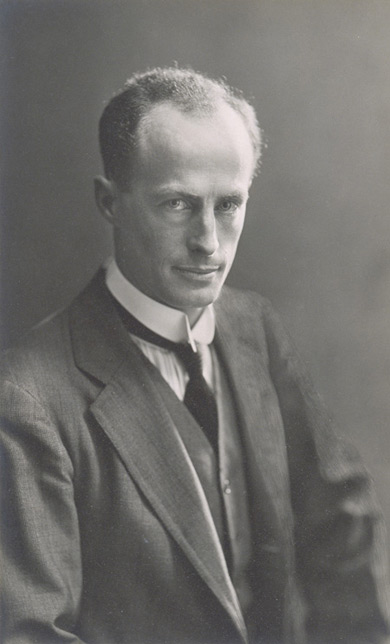Douglas Mawson
This portrait was created at a commercial photography studio in London during World War I. By the time the portrait was made, Douglas Mawson had already received his knighthood and the Gold Medal from the Royal Geographic Society.
Looking directly at the camera, Mawson strikes a confident pose for the photographer.
What words would you use to describe Mawson’s body language and expression?
The photographer focuses the lens in a way that draws your attention to certain areas of the portrait, while the rest of the image remains slightly blurred.
Look closely at the portrait. Where does the camera focus?
What effect does this have on the way you view the image?
In the early 20th century, artists focussed on capturing a subject’s character through pose and expression. In the studio portrait of Mawson, you see the photographer has avoided any detail in the background in order to concentrate attention on the individual.
If you could add your own background to the portrait, what would it be?
The National Portrait Gallery is home to another portrait of Douglas Mawson, painted by Henry J. Haley in London in 1933.
Discuss the similarities and differences between the painted portrait and the photograph.
Move your mouse over the portrait to
see the points of interest.
About the artist
Thomson Studios were established by John Thomson, a Scottish photographer closely associated with the Royal Geographical Society. Thomson instructed explorers on travel photography and published papers on the uses of photography.
Thomson Studios remained active in London up until 1921.


